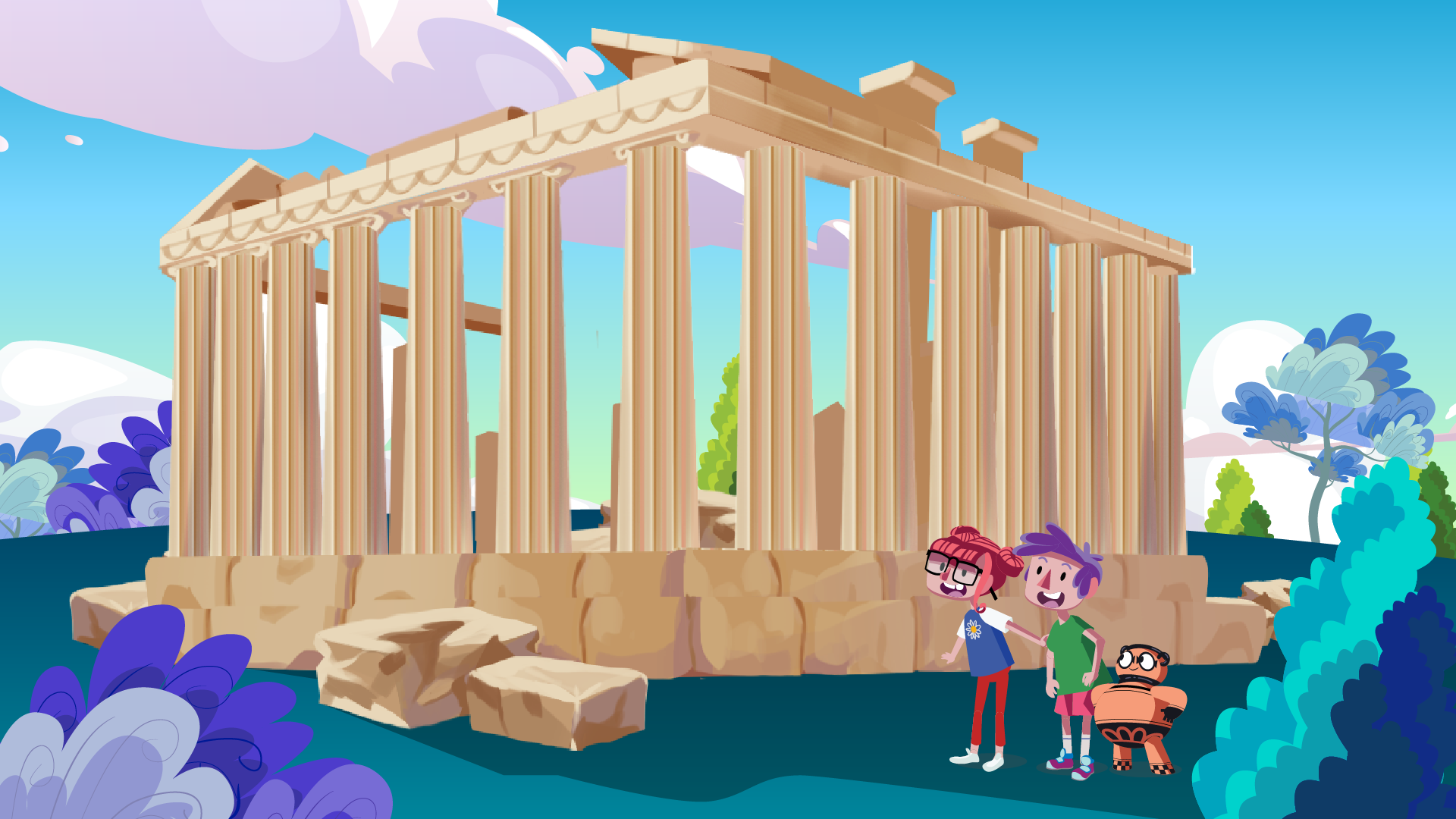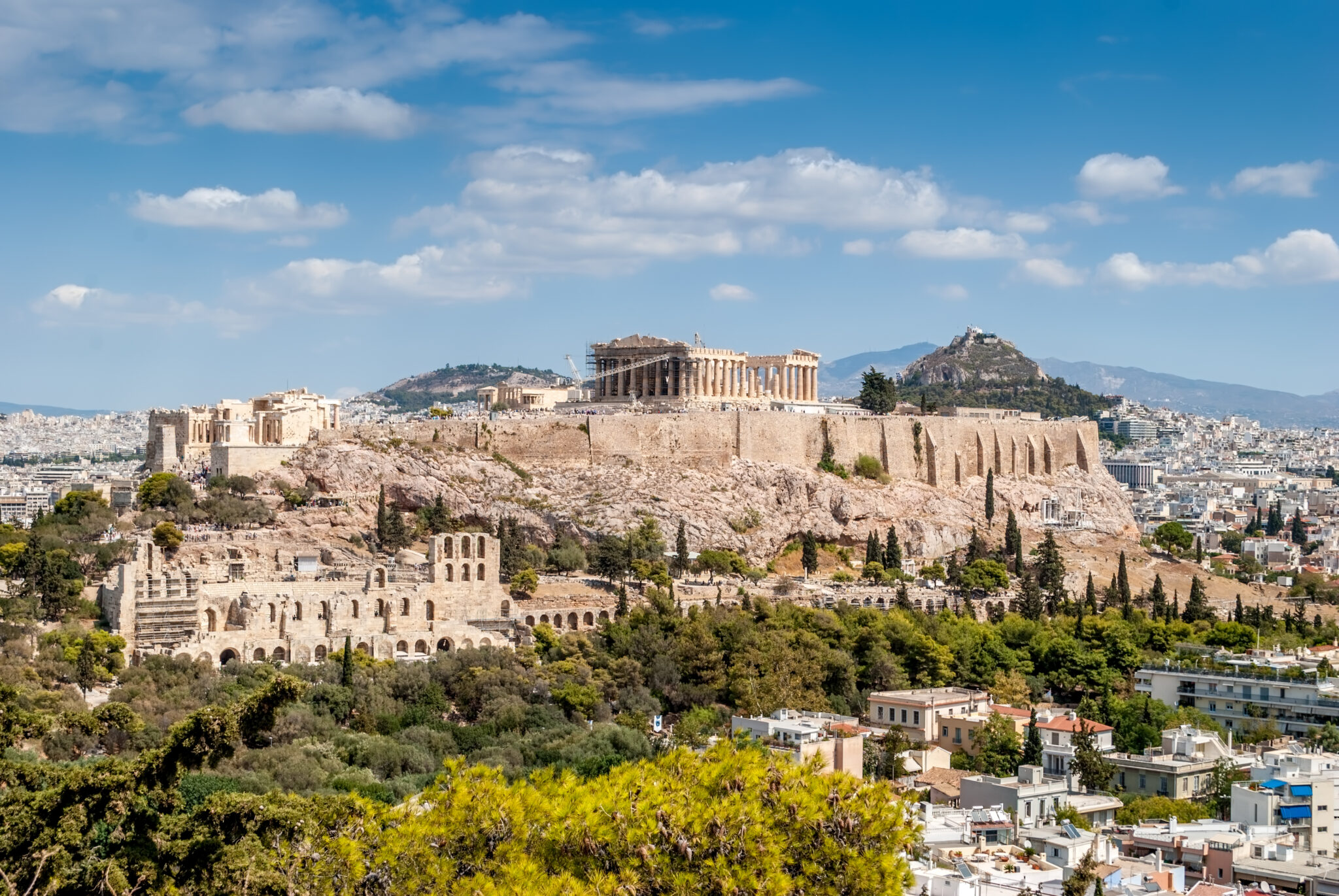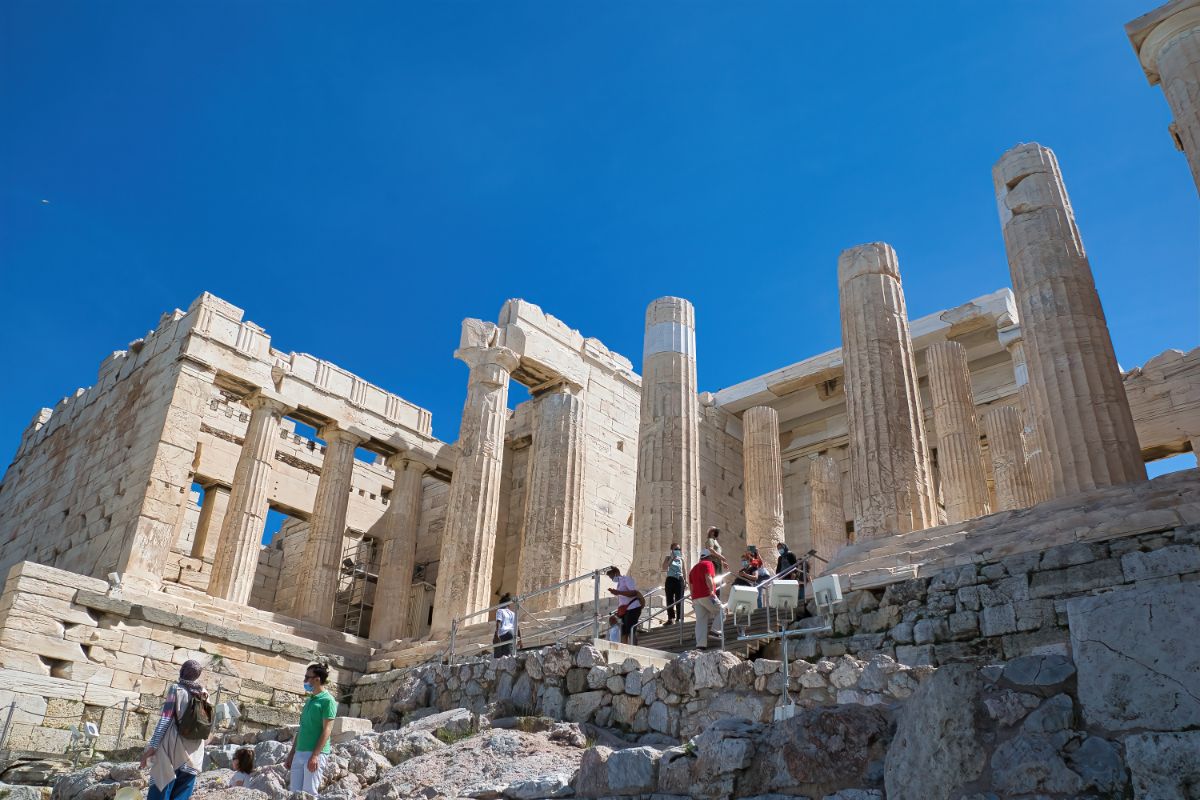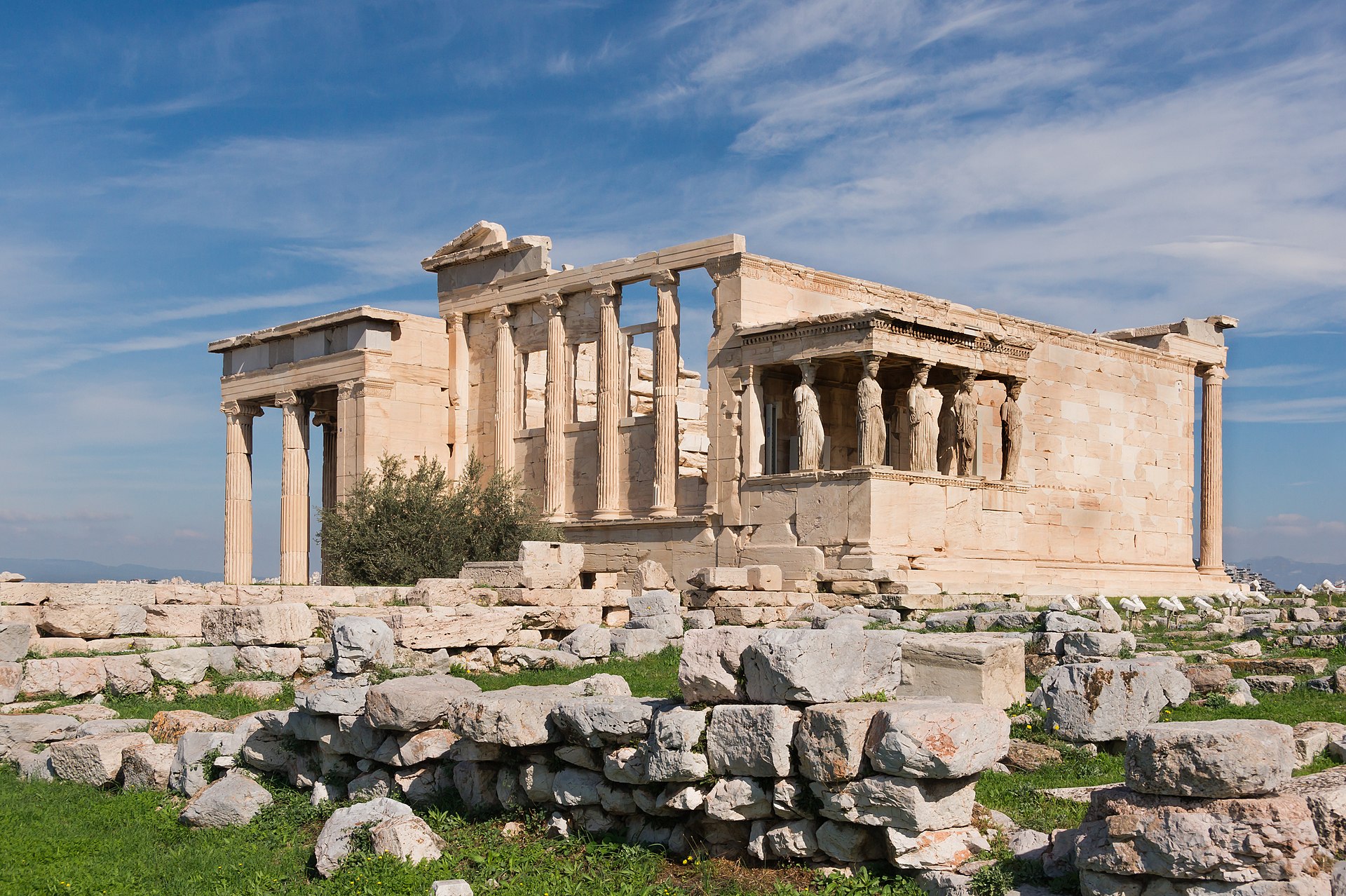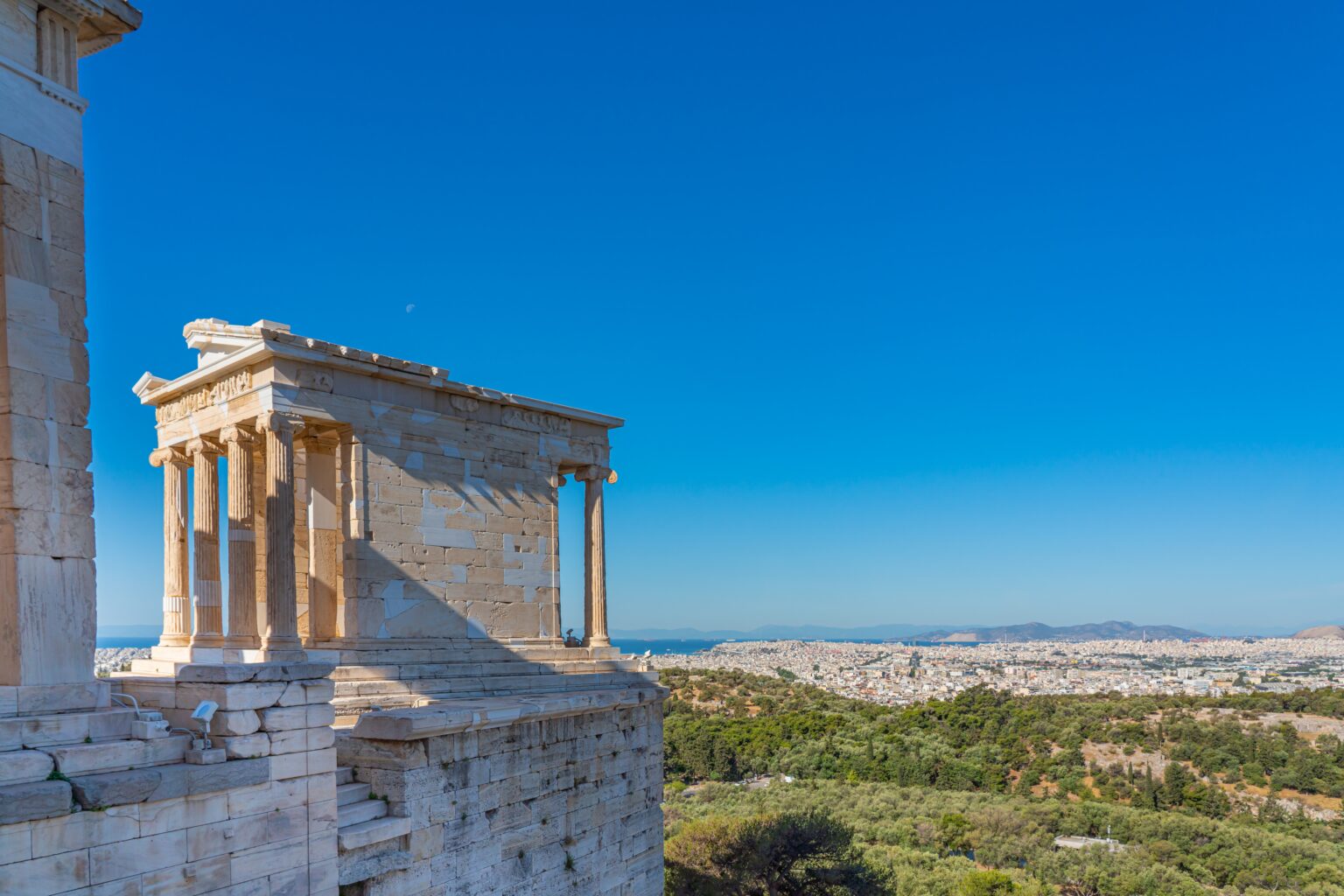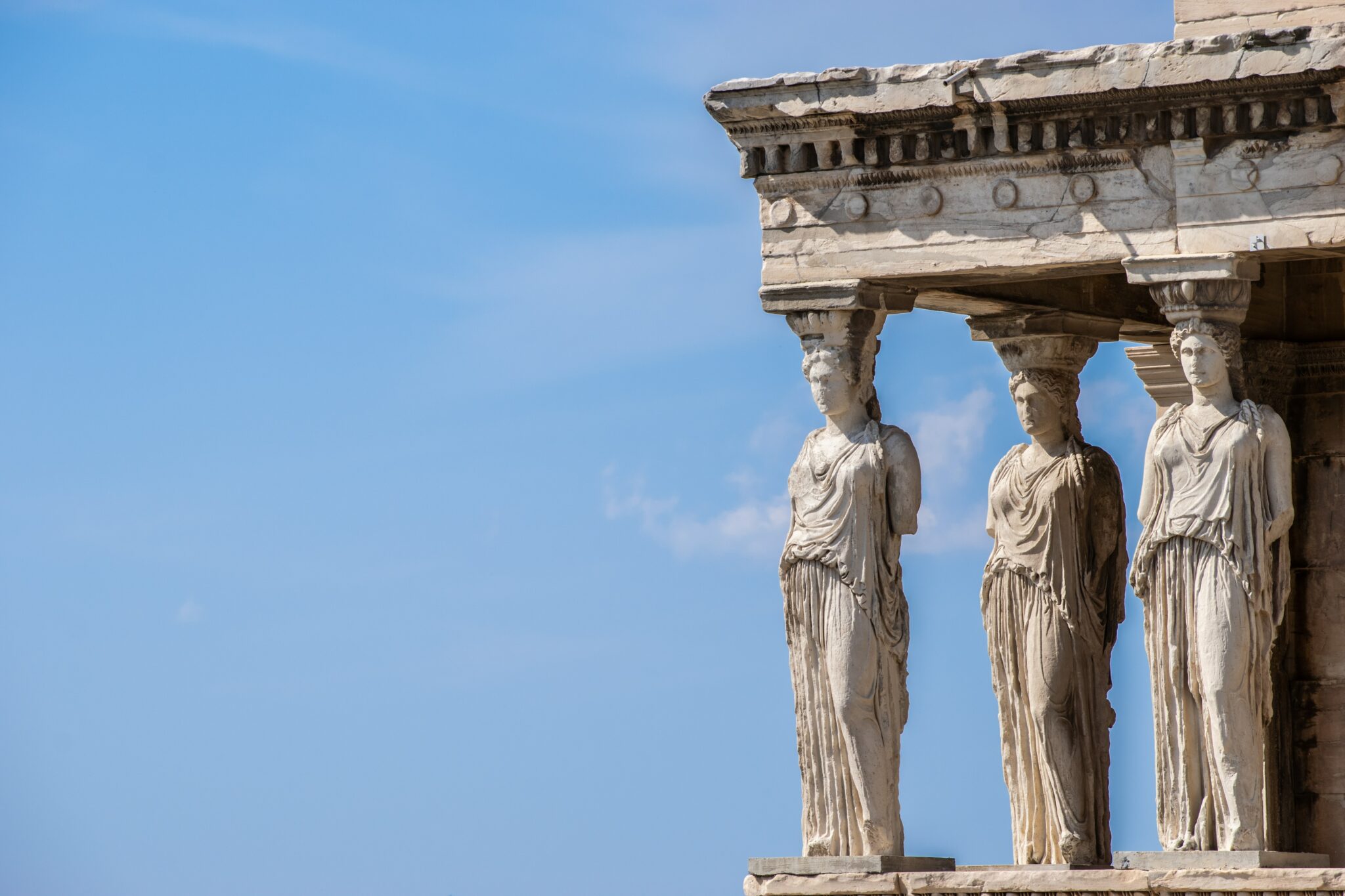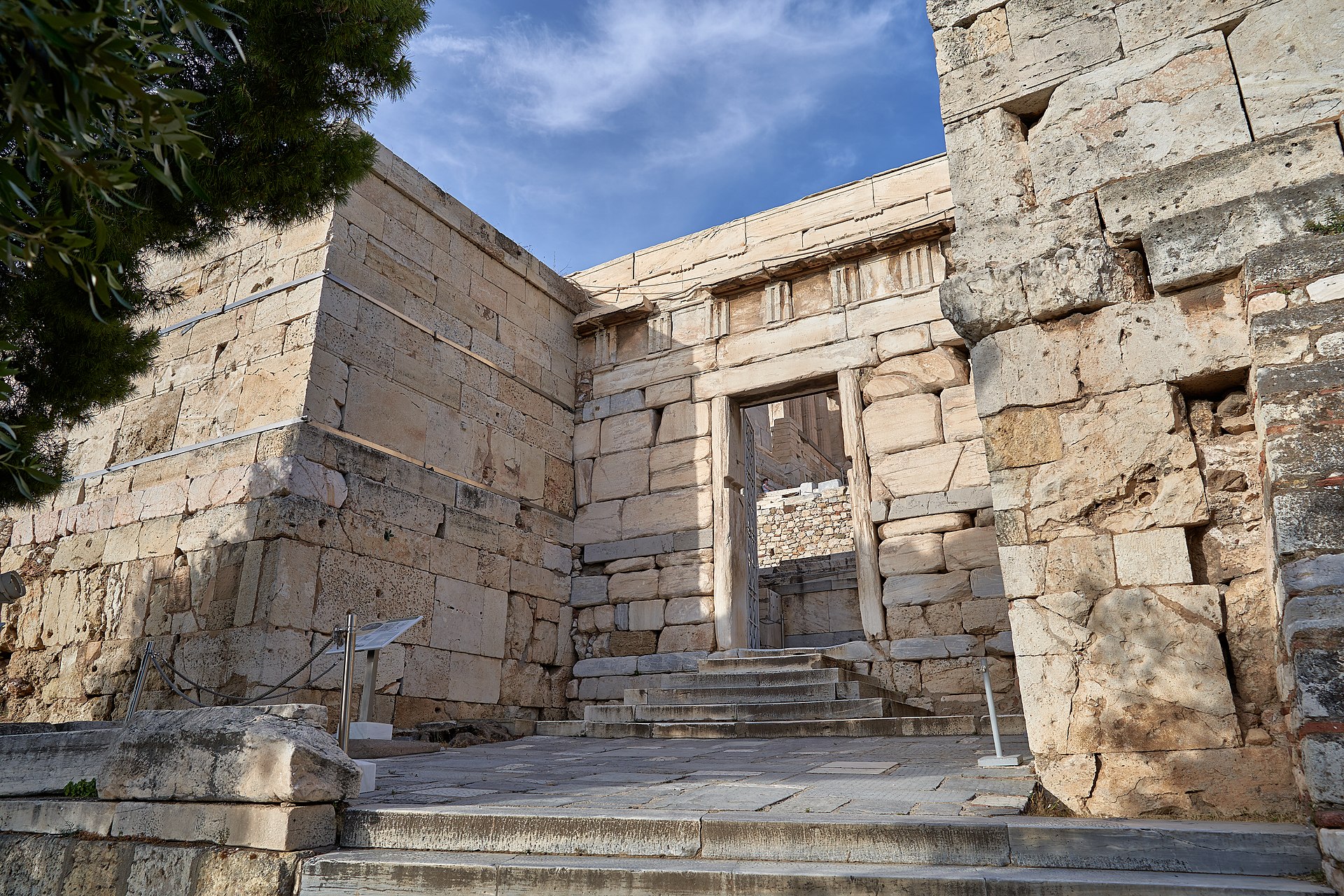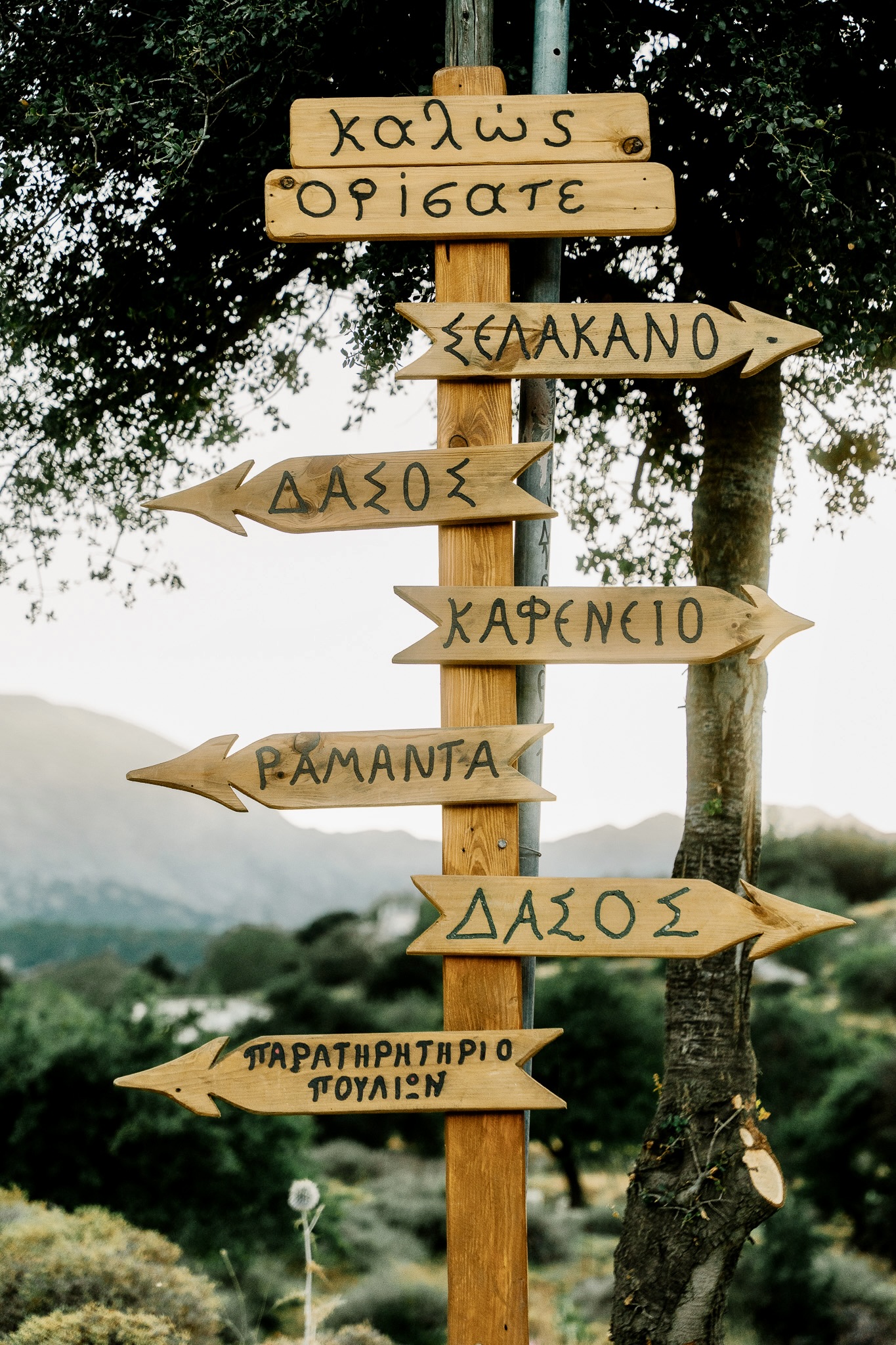Welcome to Athens, Greece, where atop a grand hill rests the Acropolis, a symbol of the city’s ancient wisdom and strength. This site, deeply sacred, is a tribute to the goddess of wisdom, Athena, much like a grand painting dedicated to a beloved figure. As you stroll through, the echoes of a long-lost civilization surround you, whispers of a time when Athens was at its most splendid and powerful.
See where Greece and it’s capital city Athens is on the map
Imagine stepping into a gleaming white time machine, back to an era where grand buildings were carved from stone and a pantheon of gods and goddesses were revered and worshipped. This is the Acropolis, a testament to human will and artistic genius, a place where the ordinary meets the divine. It’s an outdoor stage where the drama of Athens’ history unfolds in all its grandeur.
Long before the first stone of the Acropolis was laid, people made this hill their home. When the city of Athens started to grow, they fortified the Acropolis, making it a safe haven and a center of their civilization. Here, they honored Athena, their patron goddess, with grand temples that reached for the sky. But history is a tale of triumph and tragedy; when the Persians invaded, the Acropolis was damaged, yet the people of Athens remained resolute, preserving what they could.
Fast forward to the time of Pericles, the golden age of Athens. The Acropolis underwent a metamorphosis, blossoming with new constructions that would become iconic landmarks: the Parthenon, Propylaia, Erechtheion, and the temple of Athena Nike. Like a beacon, the Acropolis drew artisans and craftsmen from far and wide, eager to contribute to this magnificent project. The north side of the Acropolis honored various gods, while the south was a tribute to Athena in her many forms.
The Acropolis’ story didn’t end with the Greeks. When the Romans ruled, they added their own touch, a temple dedicated to Augustus and Rome. Despite the passage of time and the damage it suffered, the Acropolis never lost its aura of majesty. In fact, it’s been rejuvenated through continuous restoration efforts since the 19th century.
Today, as you approach the Acropolis, you’re greeted by the majestic sight of its natural fortification. Entering through the Beulé Gate or under the temple of Athena Nike, you’re led into the magnificent Propylaia. To the south, the temple of Athena Nike stands proud, and remnants of Aphrodite’s shrine are nestled nearby. Beyond the Propylaia, the heart of the Acropolis unfolds with the awe-inspiring Parthenon, the Erechtheion with its enchanting porch of the Karyatides, and traces of other historic structures, each telling a unique part of Athens’ vibrant story.
The Acropolis was a home to various religious practices, with caves on the northern slope used as shrines, and a pathway leading to various sacred sites. It’s an immersive journey into the past, a testament to human perseverance and the power of belief, all set on a hill in Athens, under the watchful gaze of the goddess Athena.
Quiz:
- What does the Acropolis symbolize in Athens?
a) Military power
b) Ancient wisdom and strength
c) Modern art
d) Economic wealth - Who is the patron goddess of Athens?
a) Artemis
b) Athena
c) Aphrodite
d) Hera - During whose time did the Acropolis undergo significant construction and become a beacon for artisans?
a) Alexander the Great
b) Pericles
c) Julius Caesar
d) Aristotle - Who are the Karyatides?
a) Ancient Greek Queens
b) Statues of women replacing columns or pillars
c) A group of historians
d) The builders of the Acropolis - What was the purpose of the Brauronion on the Acropolis?
a) It was a military fortress.
b) It was a market place.
c) It was a special place for the goddess Artemis.
d) It was a school for young girls.
You’ll find the answers at the end of the piece
Your Glossary
Athena: Athena is a goddess from ancient Greek stories. She is known for being really smart, brave, and good at many things like art, war strategy, and even maths!
Acropolis: Acropolis means “high city” in Greek. It’s usually a big hill with buildings on top. The most famous one is in Athens, Greece.
Parthenon: This is a really important old building in Greece. It was built for Athena, and it’s right on top of the Acropolis in Athens.
Propylaia: This is like a big gate or doorway that people used to enter the Acropolis. It’s really grand and fancy.
Erechtheion: This is another old building on the Acropolis. It was made to honor Athena and another god named Poseidon. It’s famous for its special porch that has statues of ladies instead of regular columns.
Brauronion: This was a special place on the Acropolis for another goddess named Artemis.
Temple of Athena Nike: This is a small temple on the Acropolis. It was built for Athena Nike, who represents victory and wisdom.
Chalkotheke: This was a building on the Acropolis that kept special bronze gifts that people gave to Athena.
Karyatides (or Caryatids): These are statues of ladies that take the place of columns or pillars in a building. The most famous ones are on the porch of the Erechtheion.
Perikles (or Pericles): Pericles was a really important leader in Athens a long time ago. He helped make Athens a great city.
Beulé Gate: This is another entrance to the Acropolis. It’s named after the man who discovered it.
Arrhephoroi: These were young girls who got to live in a special building on the Acropolis and serve Athena.
Pedestal of Agrippas: This was a stand that once held a statue to honor a man named Marcus Agrippa, who was a really important person in ancient Rome.
Shrine of Aphrodite Pandemos: This was a special place on the Acropolis for Aphrodite, the goddess of love and beauty.
Shrine of Zeus Polieus: This was a special place on the Acropolis for Zeus, the king of the gods, who was seen as a protector of cities.
Answers: 1. b, 2. b, 3. b, 4. b, 5. c
Read also:
A Guide to the Acropolis: The Sacred Rock of Athens
Luxury Shopping in Athens: The Top Fashion Addresses
Street Art in Athens – The Urban Culture of the City on its Walls



